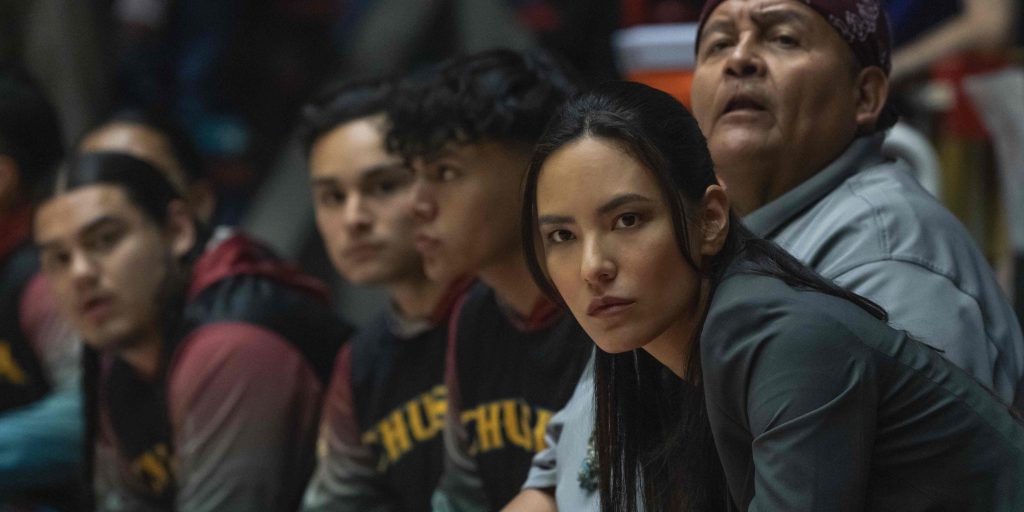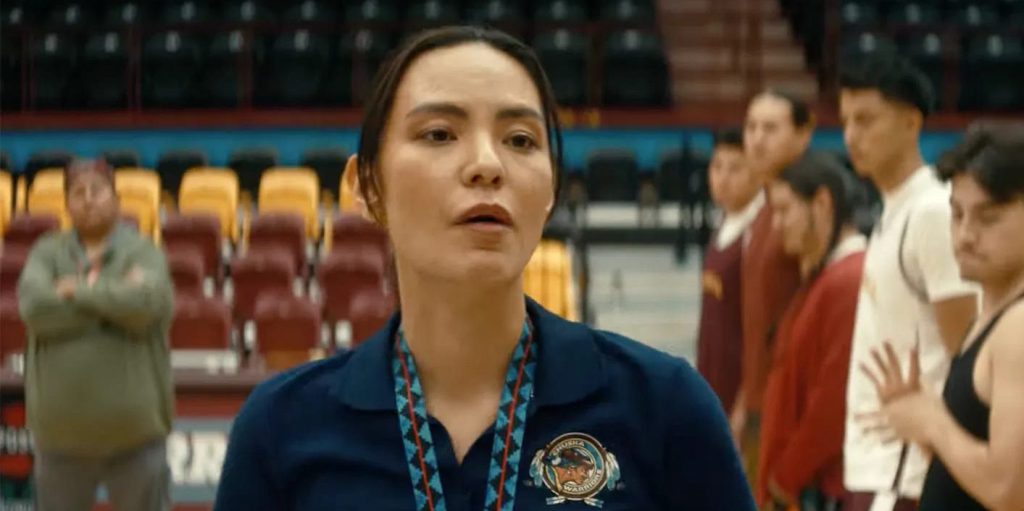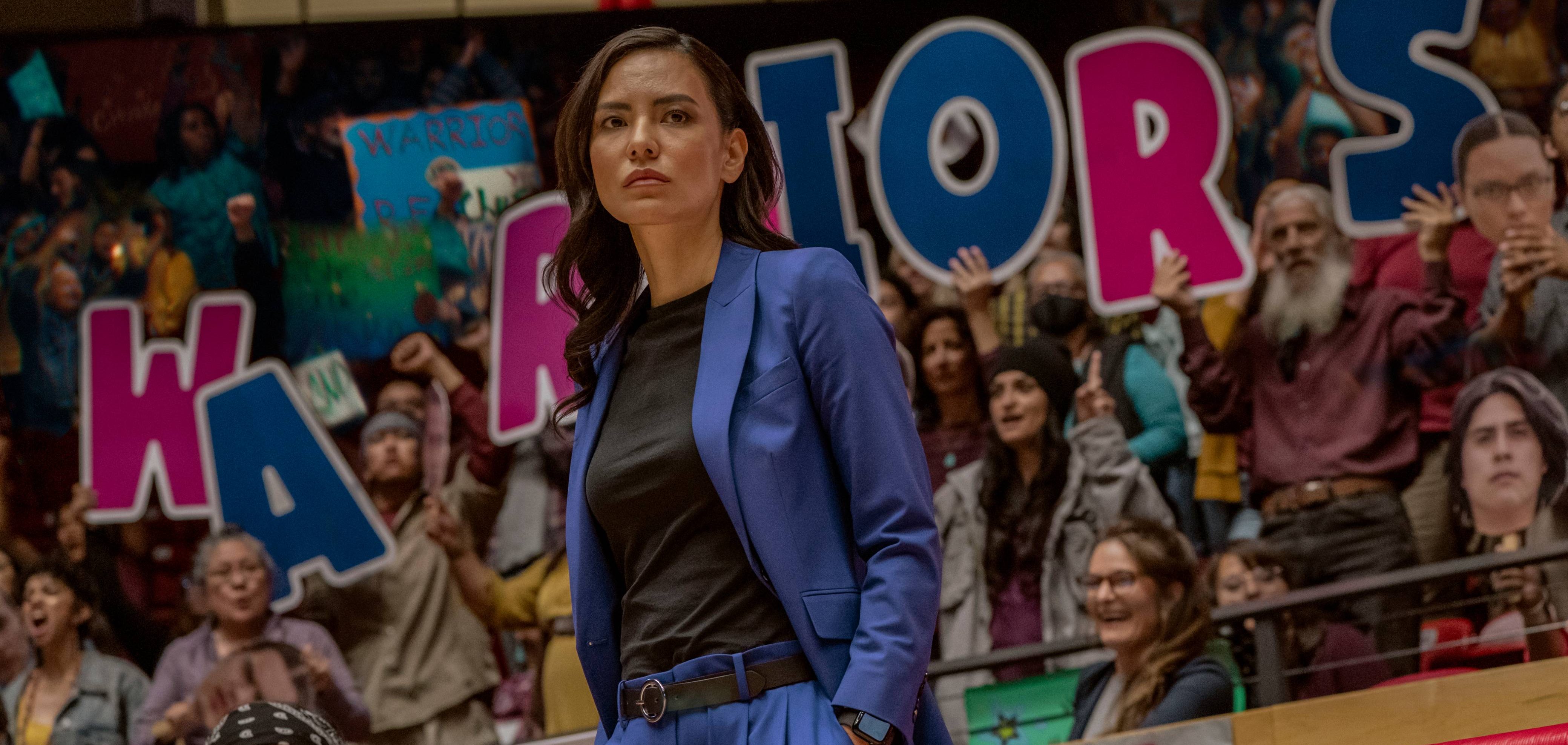Netflix’s ‘Rez Ball‘ follows a Native American high school basketball team named the Chuska Warriors that loses its star player to a tragedy. Subsequently, the team and its coach, Heather Hobbs, must learn to play as a unit as they set their sights on winning the New Mexico State Championship. Although the sports film features a moving narrative about coming together against harrowing odds, certain subtle changes in the characterizations help it become more than a typical inspiring drama. The movie and its characters’ inspirations are intricate, creating a sense of intrigue about their genesis!
Heather Hobbs is a Fictional Basketball Coach Rooted in Reality
Heather Hobbs in ‘Rez Ball’ is a fictional creation of Sydney Freeland and Sterlin Harjo, who wrote the sports drama. Although the film is inspired by Michael Powell’s non-fiction book ‘Canyon Dreams: A Basketball Season on the Navajo Nation,’ the narrative beyond the premise was created exclusively by the two screenwriters. This includes the character of Hobbs. In reality, her role is filled by Coach Raul Mendoza, who was at the helm of the Chinle Wildcats, the real-life counterpart to the Chuska Warriors. However, Powell’s book states that Mendoza is not a Navajo man himself, although he is married to a woman from the tribe.

While developing the screenplay, Freeland and Harjo decided to deviate from the real-life story chronicled by a non-Native American journalist as two Indigenous screenwriters. Additionally, they wanted to move away from the stereotypical depiction of a Gene Hackman-type coach from the ‘Hoosiers,’ who might be viewed as a “white savior.” As the idea of “rez ball” or reservation basketball permeates the story, it was essential to them that cultural authenticity was maintained in the depiction of the story they wanted to share. Therefore, these values had to be embedded in the coach’s character, especially since Hobbs is the leader and mentor of the team.
Gender and ancestry are not the only differences between Mendoza and Hobbs. The former WNBA player leads the Warriors to the state championship in the film. However, in reality, the coach could not end the 2017–2018 season, the subject of Powell’s source text, with a victory. The Chinle Wildcats were defeated by the Winslow Bulldogs in the playoffs, only for the latter to proceed to the championship game.
The Success of Native American Women Basketball Players is Illustrated Through Heather Hobbs
One of the key highlights of Heather Hobbs is how her character goes against several tropes that are regularly seen in narratives in the sports drama genre. To begin with, as a female coach in a men’s sport, she is placed in a minority of women who are appointed to such positions. However, it also points to the success of women’s rez ball over the years. “The girls’ teams on reservations have actually had traditionally a lot more success than the boys’ teams,” Sydney Freeland told TIME. Hobbs can be viewed as a personification of this thriving tradition among Native American women’s basketball teams. In the film, she even brings in Chuska High’s girls’ team for a practice match against the boys, only for the latter to get soundly defeated by the former.

Freeland and Sterlin Harjo also revealed that the name “Hobbs” is a tribute to the University of Nevada, Las Vegas (UNLV), hall of famer Gwynn Hobbs. She was a prolific star player who inspired many Native American women to succeed in college basketball. Gwynn was particularly known for her long-range shots, and she scored a record-breaking number of those shots during the 1992-93 season. While the fictional basketball coach does not share the same elevated status within the game, she serves as an inspiration to her players, often molding them not only through technical training but also by extending her support as they cope with their personal struggles.
According to Harjo, the idea of a female leader in a Native American community made sense because of his and Freeland’s experiences growing up. “Both Sydney and I come from matriarchal communities. You get disciplined by the women, and you have strong women to look up to whether you’re a woman or a young man or whatever,” he said in the same TIME interview. Therefore, the inclusion of the fictional Hobbs only enhances the portrayal of the Native American culture while also shifting away from cliched tropes and providing a new perspective. Even though the character’s origin was influenced by Raul Mendoza, in the strictest of terms, she is a made-up character integral to the sports drama’s narrative.
Read More: Is Rez Ball a True Story? Is Jimmy Holiday a Real Basketball Player?


You must be logged in to post a comment.